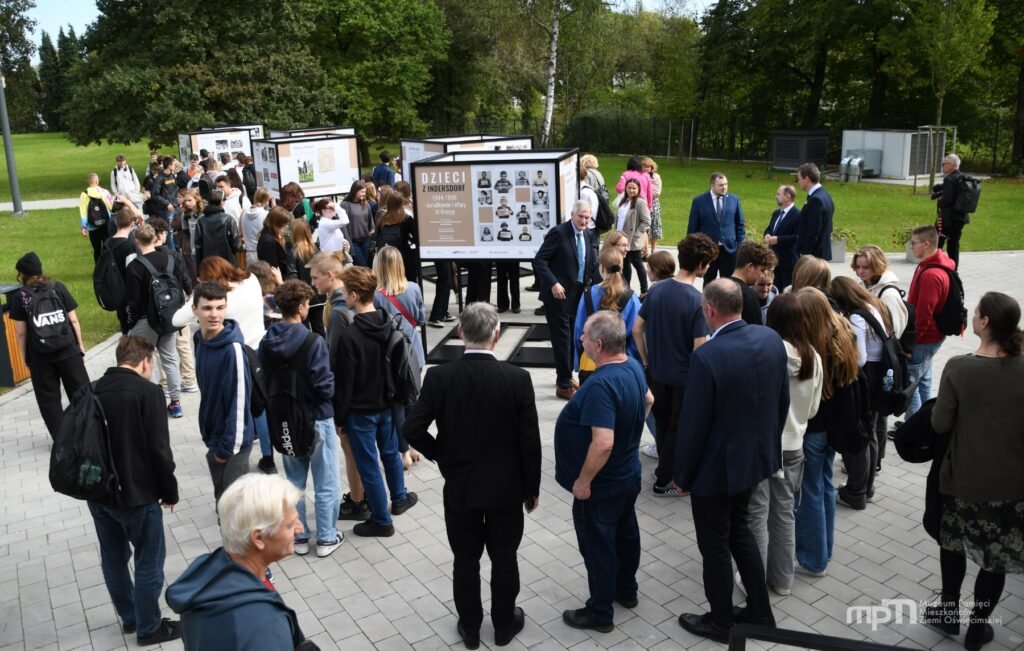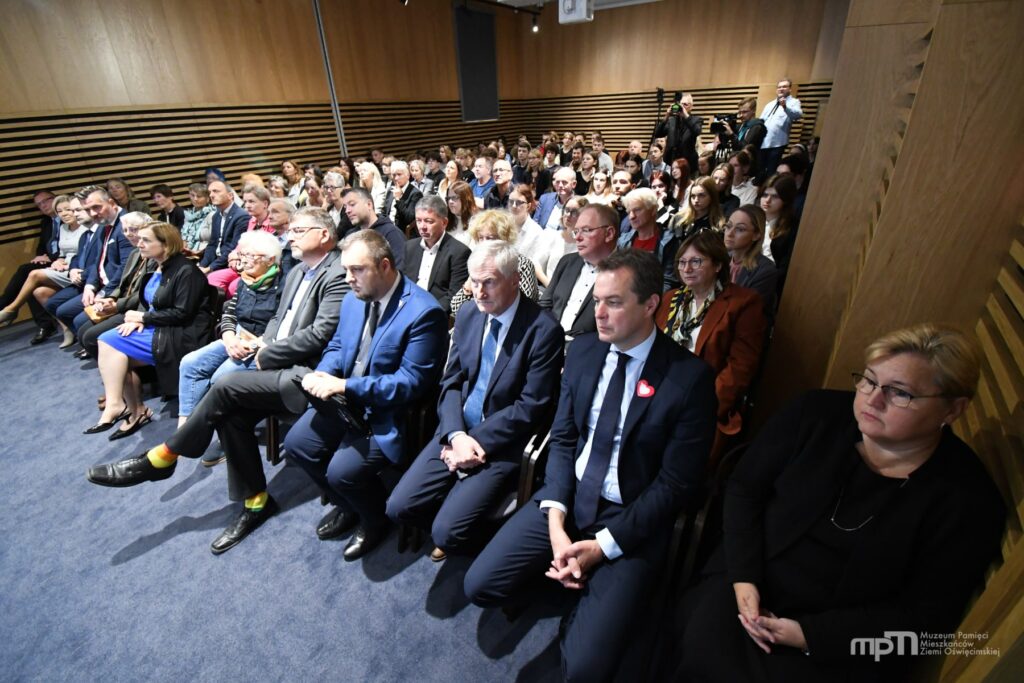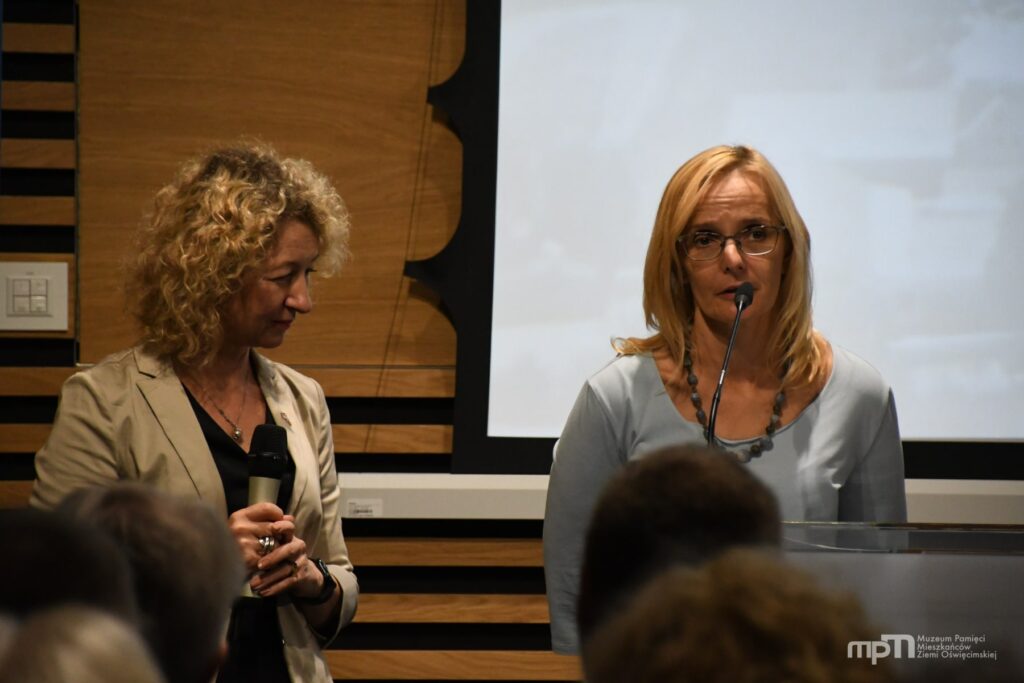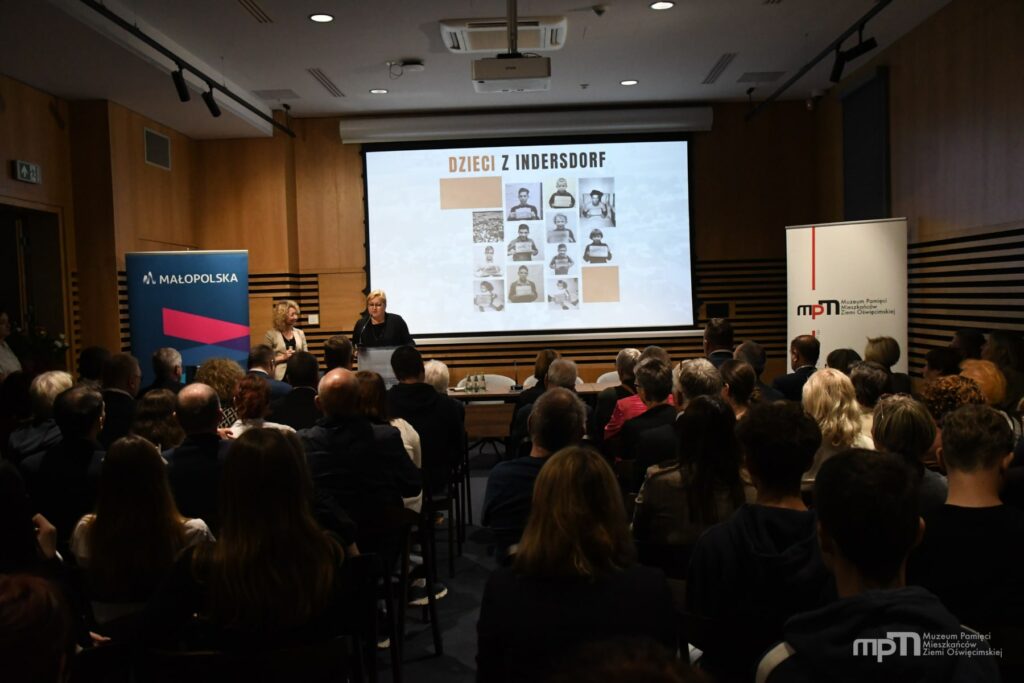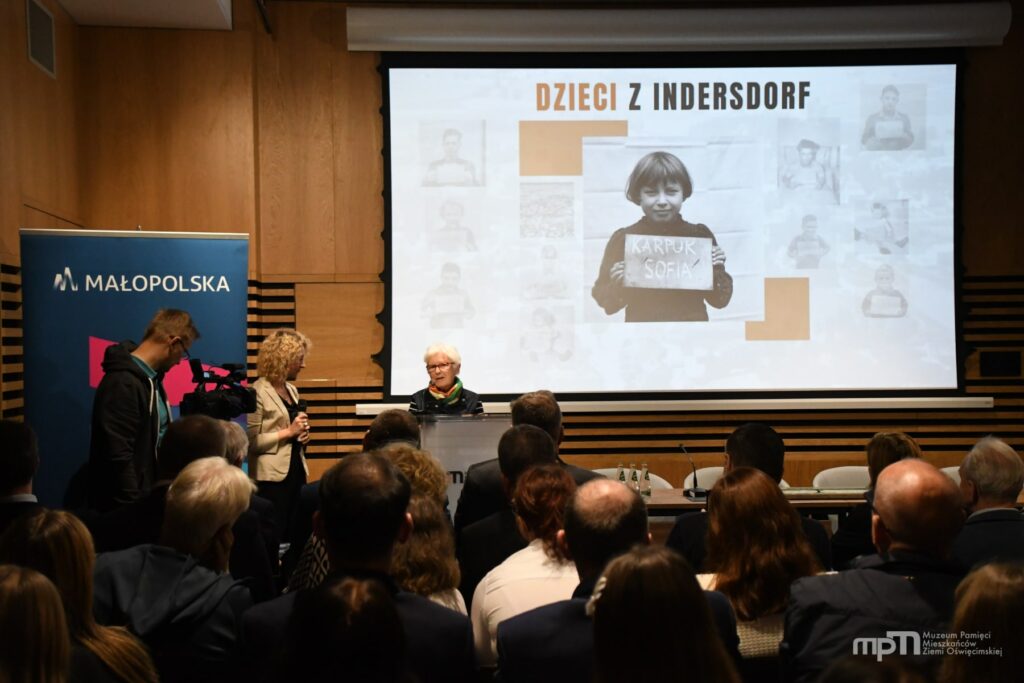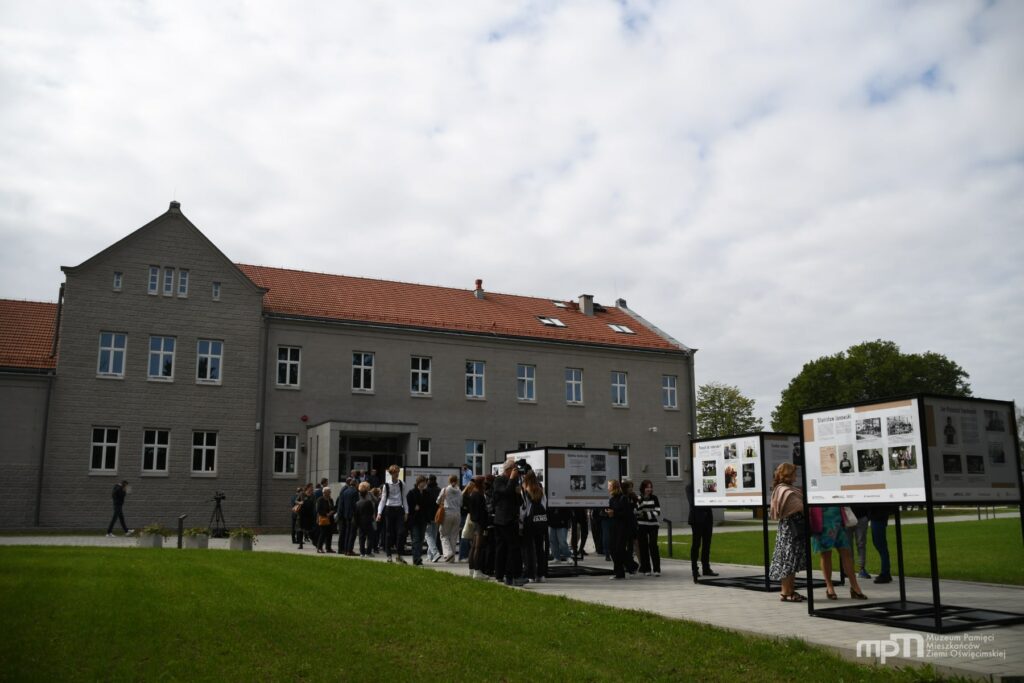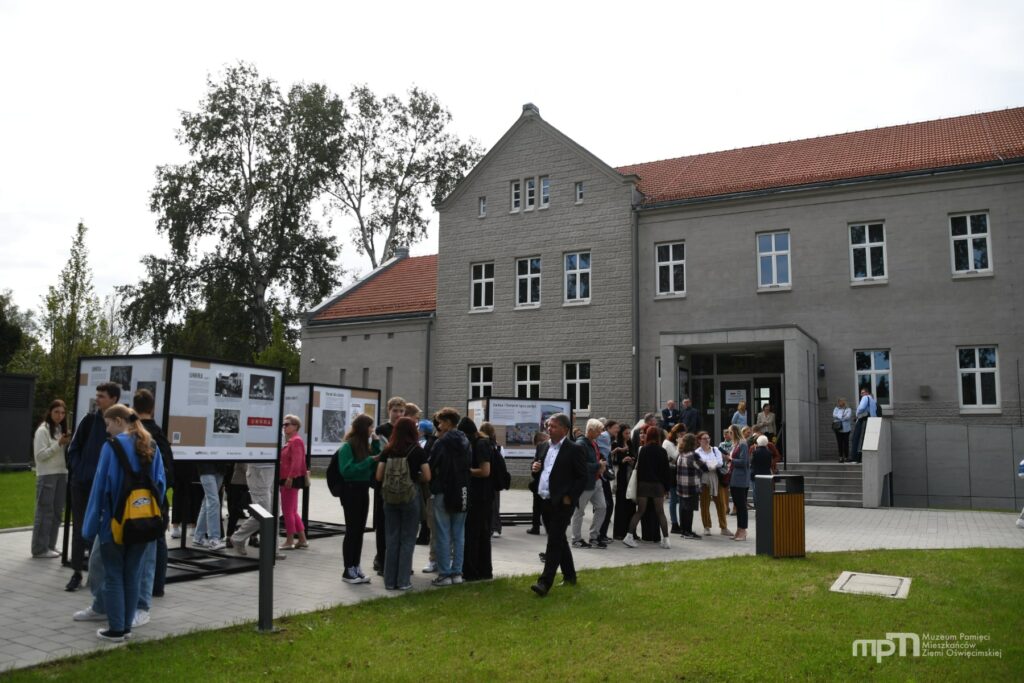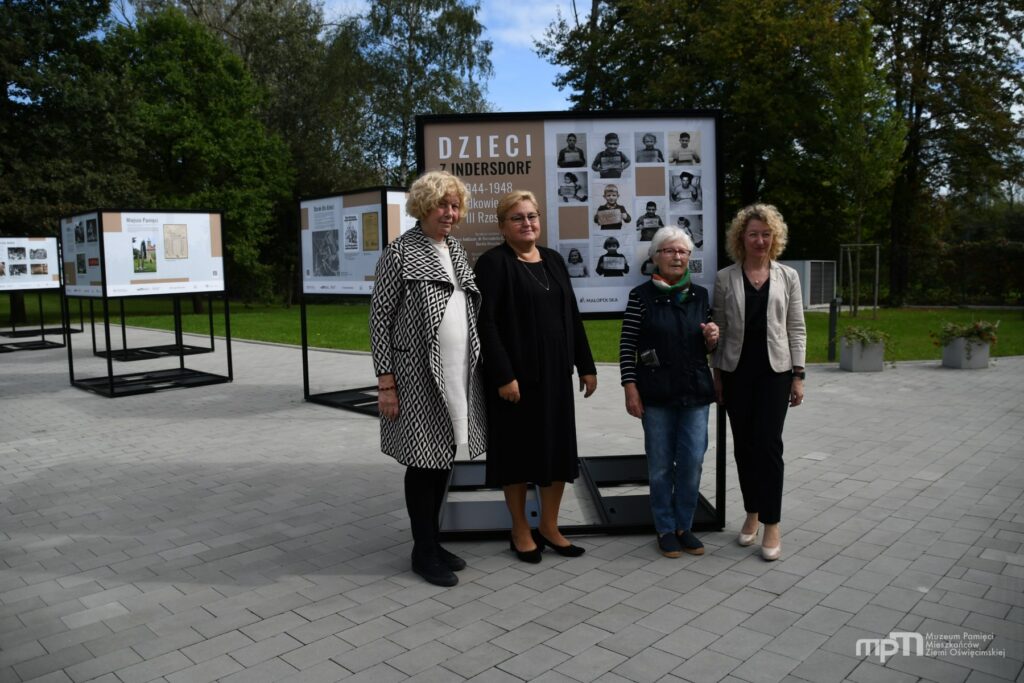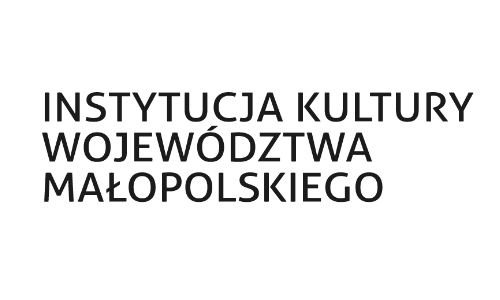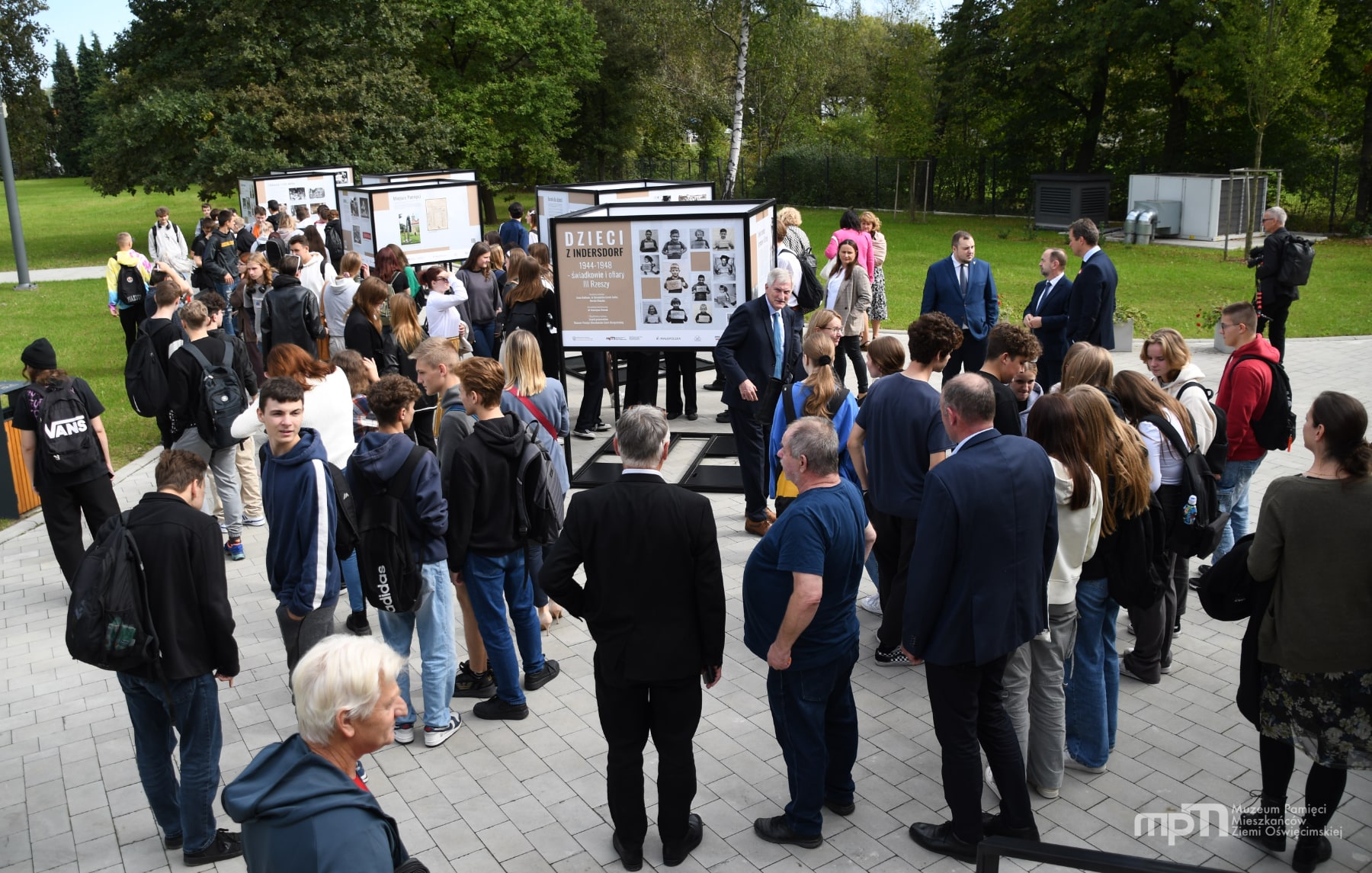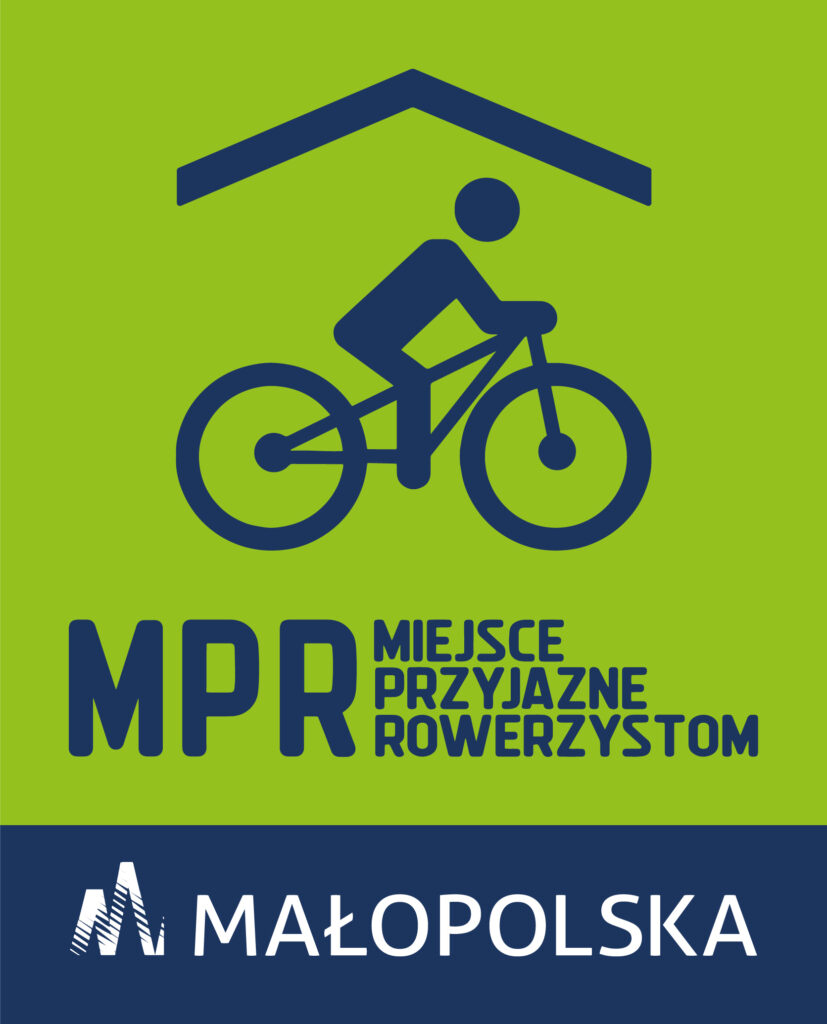Almost 200 people attended the opening of the Remembrance Museum’s temporary exhibition “Children from Indersdorf 1944-1948 – witnesses and victims of the Third Reich”. A special guest was Zofia Karpuk – one of the girls from the Indersdorf centre.
“It is a great honour for me that you are with us today” said Dorota Mleczko, director of the Remembrance Museum of Land of Oświęcim Residents. She also talked about how the exhibition came about when over a year ago she visited the Dachau district. One of the points of her stay was a visit to Markt Indersdorf, where historian Anna Andlauer led the guests along a Remembrance Trail. There she heard for the first time about the history of the children of Indersdorf. Among them were many children of forced labourers from Poland.
The result of further months of work by the three curators Dorota Mleczko, Anna Andlauer, Dr. Bernadetta Czech-Sailer, as well as the content consultant Dr. Katarzyna Woniak and a team of Remembrance Museum employees, can be viewed from Monday at the entrance to the museum.
The exhibition consists of 24 large-format display boards with texts and almost 100 photographs, mainly from the time when the children’s centre in Indersdorf operated after the war.
“My brother and I were deported with my mother to Germany, to Bavaria, to the landlords,” recalled Zofia Karpuk (married name Ogłaza), a witness to history who was present at the opening of the exhibition. After her mother died, she and her brother Janusz ended up in Indersdorf. She told those gathered about her stay in the centre and her further post-war fate. They both visited Indersdorf again only after 64 years – in 2009.
Invited guests, among them the German Consul General Holger Mahnicke, a large delegation from the German administrative district of Dachau with Stefan Löwel, the head of the Oświęcim partner administrative district, and Andrzej Skrzypiński, the head of the district, who accompanied them listened intently to Zofia’s story. The largest group of participants was young people from secondary schools.
At the end of the meeting, participants watched a short documentary by Anna Andlauer entitled “Back to Life” about the fate of the Indersdorf children.
The temporary exhibition will be open until the end of June 2024. It is open to visitors free of charge at the entrance to the Remembrance Museum at 2A Kolbego Street in Oświęcim. It has an English language version. The translation can be accessed by scanning QR codes.
In September this year a popular science conference entitled “Forced labourers – forgotten victims of the Third Reich” was held at the museum and broadcast live and a recording is available online.
